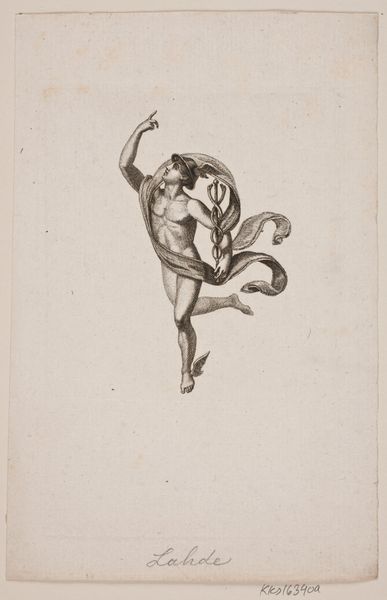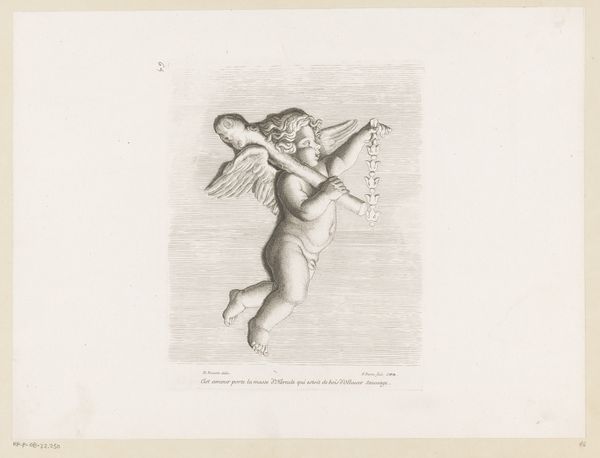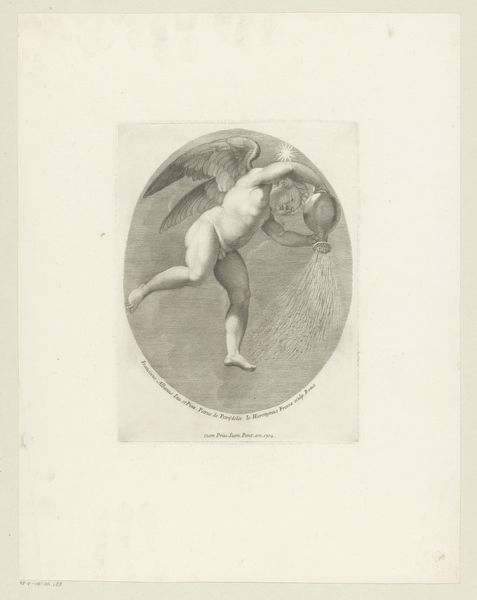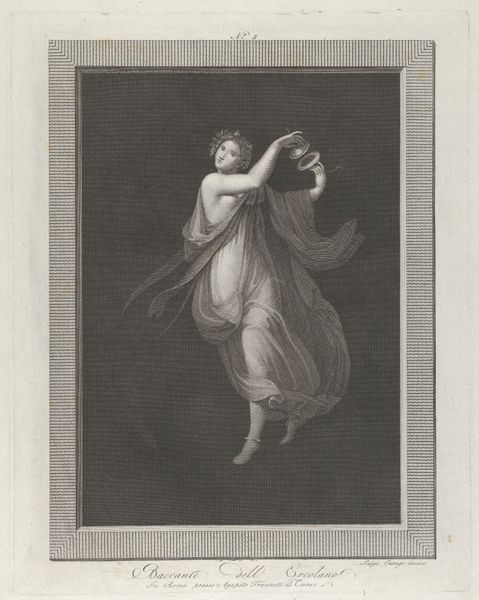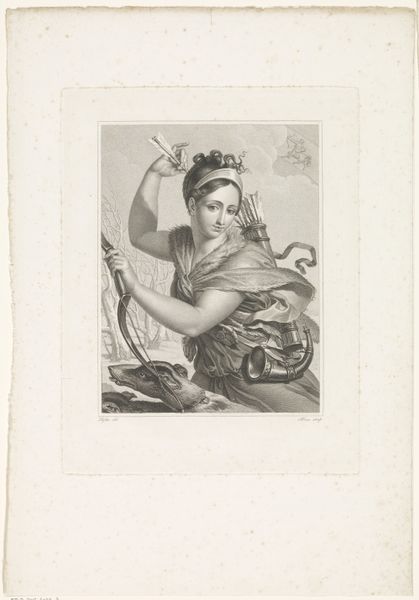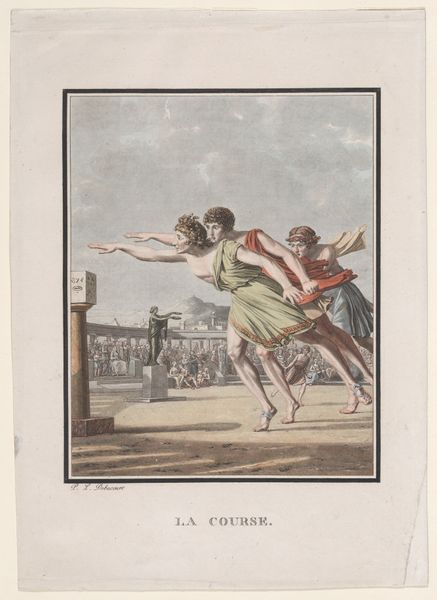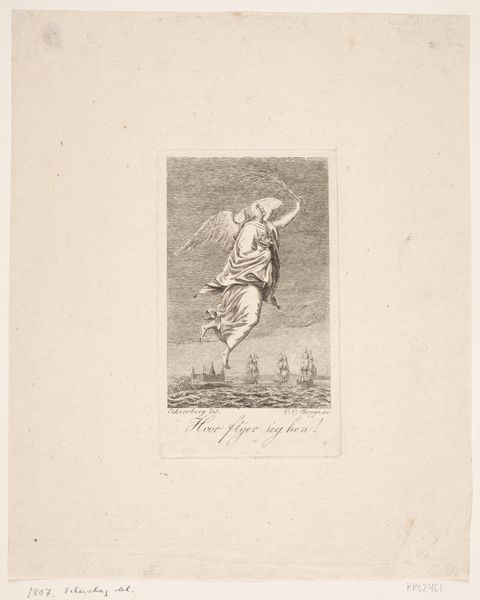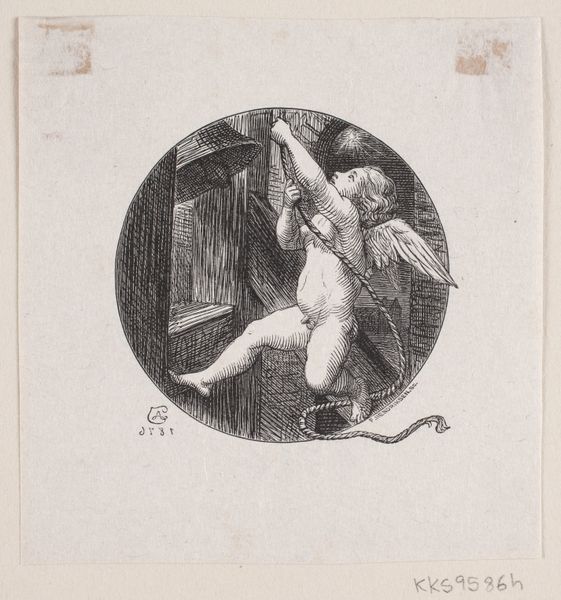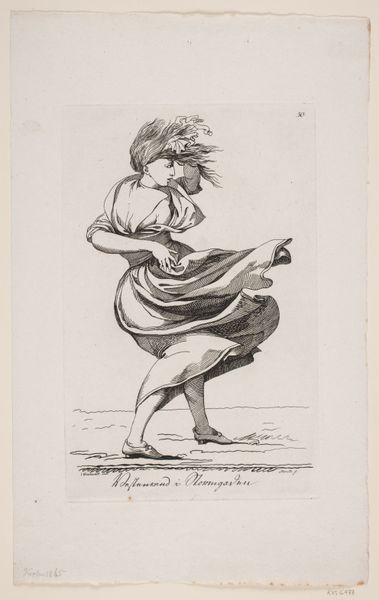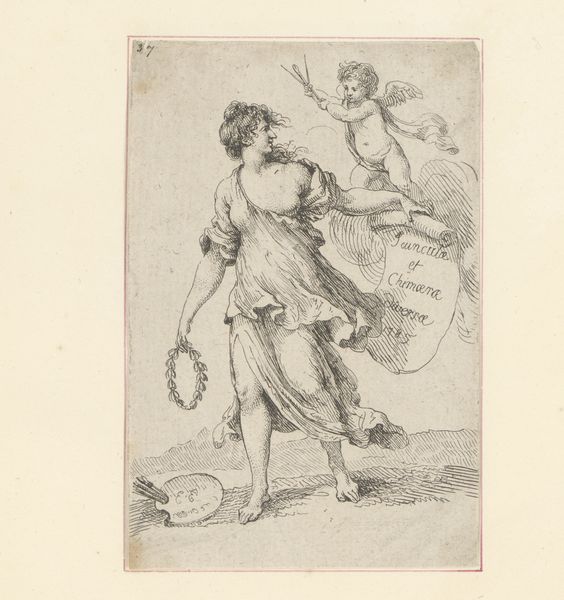
print, etching
#
portrait
#
neoclacissism
# print
#
etching
#
greek-and-roman-art
#
figuration
#
line
Dimensions: 150 mm (height) x 100 mm (width) (plademaal)
Curator: I'm immediately struck by the sense of lightness, almost buoyancy, emanating from this print. It feels airy, like he's barely tethered to the ground. Editor: Indeed! Here we have Gerhard Ludvig Lahde's "Hermes," believed to have been created sometime between 1765 and 1833. It's currently part of the collection at the SMK, Statens Museum for Kunst. Curator: The line work is incredibly delicate for an etching. It makes you want to inspect every contour of his form. There’s an optimism here that feels, well, rather unburdened. Almost flippant? Editor: Given the period and the ascendance of Neoclassicism, that sense of idealized form, referencing Greek and Roman art, was deliberate. But, yes, you sense Lahde's style isn't stiff; it carries its learning lightly. The politics of imagery here lean on establishing cultural prestige and promoting moral virtue, but filtered through a lighter Rococo sensibility perhaps. Curator: So it is aspirational—Hermes, messenger of the gods—leading us to something better? Or perhaps illustrating Enlightenment ideals in a less grandiose fashion? It also strikes me as a distinctly humanized figure. The musculature, while idealized, isn’t overwhelming. Editor: I think that tension between divine symbolism and approachable humanity is precisely where the print finds its power. Prints such as this, were not solely objects of aesthetic enjoyment, they helped spread and democratize cultural ideals through dissemination and consumption. Curator: So, in a sense, Lahde brought Hermes down to earth. That notion of aspiration seems accessible. Didactic without being pompous? It is very refined—that snake curling around his staff really pops. The use of blank space is masterful; notice how it emphasizes Hermes as a floating deity of motion. Editor: Exactly! The piece represents a particular socio-political environment where art served both aesthetic and pedagogical purposes, reflected through classical idealism and Enlightenment principles. The medium afforded reproducibility and expanded access to those messages, unlike the traditional arts, previously enjoyed primarily among social elites. Curator: A beautiful dance between artistry, accessibility and aspiration—with very shapely ankles, I must say! Editor: I concur, a graceful reminder of how art engages, inspires and—quite literally—moves us!
Comments
No comments
Be the first to comment and join the conversation on the ultimate creative platform.
